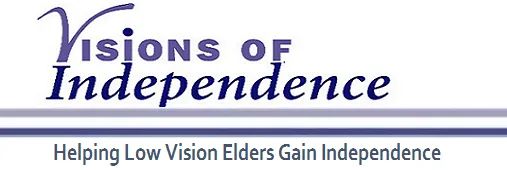Reading bills
Reading bills can be very challenging for low vision patients. Most bills are sent using small type, has no contrast and the layout is often confusing. For patients who are comfortable using computers, we recommend getting their bills electronically by e-mail. That way, the patient can increase the font size of the bill while reading it on the computer. Many patients benefit from using changing the background to yellow which makes the black type really stand out. Paying bills can also be done electronically. Most banks provide online banking that allows you to pay bills directly from your checking account. Some utility fees can be deducted automatically from a checking account by the utility company, eliminating the need for writing a check.
Many of our patients do not use computers. We obviously recommend different strategies for them. The first step in paying a bill is to be organized with the mail. We recommend that they have a specially, different colored file folder where they put all their bills as soon as they receive their daily mail. Leaving unsorted mail around causes real problems for low vision patients. When a patient is ready to pay their bill, they should take out that folder and bring it to the area which they have already defined as their "reading and writing" area. This area needs to be uncluttered and have a good desk lamp. They should read the bill using that good light and any optical devices they may have. We teach our patients to use a black felt tip marker to make any notes on the bill that they are paying; check number and date of payment.
An option that is also available is to use a bill paying service. Patients can arrange to have their bills sent directly to the service and they will automatically pay the bill from your checking account.
If patients want to pay their own bills, and most do, we try everything possible to make them successful. For most patients, paying their own bills helps them feel independent and reduces the need to ask help of others.
